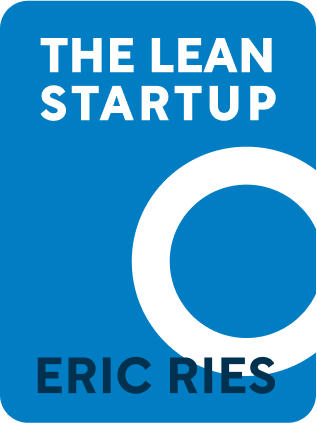1-Page Summary1-Page Book Summary of Lean UX: Designing Great Products with Agile Teams
The methodologies and concepts derived from the Lean Startup philosophy.
Entrepreneurship and innovation prioritize rapid adjustment, incorporating insights from customer interactions, and understanding confirmed through practical application, all of which are essential elements intrinsic to the Lean Startup approach.
The Lean Startup approach encourages teams to remain flexible and adjust their strategies as new understandings arise. The approach advocates for grounding the process of designing products in data that can be verified through customer feedback, rather than depending on speculation or individual convictions. It embraces a continuous innovation approach, aiming for incremental improvements in offerings by engaging in a loop of development, assessment, and learning.
The approach encourages continuous innovation by repeatedly progressing through phases of development, assessment, and learning, and is inspired by the foundational concepts of Lean manufacturing and the Lean Startup methodology.
The Lean Startup methodology is designed to enhance productivity by minimizing inefficiencies in production processes. In a Lean Startup methodology, "waste" refers to anything that fails to provide value to the customer. This waste can manifest as unnecessary features, excessive documentation, or offerings that do not meet genuine needs. The cyclical approach to creation, evaluation, and refinement, reflecting the principles akin to those of the Lean methodology, underscores continuous improvement through knowledge gained throughout the production phase. By employing this method, teams can swiftly discern effective strategies from those that fall short, thereby reducing unnecessary expenditure of time and resources.
The methodology of Lean Startup emphasizes experimentation over extensive planning, places higher importance on customer feedback than on gut feelings, and advocates for an iterative design process instead of a fully fleshed-out design at the outset.
Conventional product creation often necessitates extensive upfront strategizing and detailed recording of specifications, with the expectation that the end result will meet all predefined necessities. The Lean Startup approach values experimentation over extensive planning, acknowledging that market response is the ultimate determinant of a product's success. Teams derive genuine understanding from user interactions by employing products that possess the essential features for functionality, rather than relying on conjecture or gut feelings. Data fuels an ongoing enhancement loop in design, consistently refining products through genuine assessments based on how users engage with them. Prioritizing customer feedback above strictly following an original plan is of greater significance.
Lean startup methodologies prioritize creating a product with only the essential features to draw in early adopters and underscore the significance of confirmed learning and modifying the approach based on genuine responses from customers.
"Lean UX" advocates for the rapid and economical development of a...
Want to learn the ideas in Lean UX: Designing Great Products with Agile Teams better than ever?
Unlock the full book summary of Lean UX: Designing Great Products with Agile Teams by signing up for Shortform.
Shortform summaries help you learn 10x better by:
- Being 100% clear and logical: you learn complicated ideas, explained simply
- Adding original insights and analysis, expanding on the book
- Interactive exercises: apply the book's ideas to your own life with our educators' guidance.
Here's a preview of the rest of Shortform's Lean UX: Designing Great Products with Agile Teams summary:
Lean UX: Designing Great Products with Agile Teams Summary This method takes advantage of minimum viable products and the execution of experiments by utilizing the core concepts of the Lean Startup methodology.
Teams utilizing Lean Startup methodologies create basic iterations of their offerings, termed Minimum Viable Products (MVPs), to swiftly confirm hypotheses and integrate input from real users while conserving resources.
The methodology of Lean Startup places a strong emphasis on the principle of developing a product with the most basic features necessary for deployment. Jeff Gothelf champions a methodology in "Lean UX" that emphasizes the development of a product equipped with merely the essential features for viability, thereby curtailing the investment of time and resources in potentially unproductive ideas. Before beginning the creation of their MVP, teams must possess a well-defined understanding of the information they seek to gather.
MVPs can take many forms, from simple initial web pages to complex interactive prototypes, as well as the most basic working programs, all created with the intent of testing fundamental assumptions.
A prototype offers a mock-up that allows customers to fully grasp the worth of the experience. Evaluations are conducted using prototype versions instead of the final products. When developing the model, it's important to prioritize...
Try Shortform for free
Read full summary of Lean UX: Designing Great Products with Agile Teams
Lean UX: Designing Great Products with Agile Teams Summary Incorporating feedback and suggestions from customers.
The methodology known as The Lean Startup emphasizes continuous collaborative research with customers and utilizes their feedback to guide product development.
Groups that adopt Lean UX principles give considerable importance to the understanding obtained from what customers have to say. Gothelf emphasizes the importance of continuous conversations with customers and the inclusion of all team members in the research phase, which can drive the team's progress.
All team members, each bringing their distinct skills to the table, are actively involved in user research and testing.
Gothelf advocates for a joint exploration approach. Teams collaborate to confirm their assumptions through direct interaction with actual environments. Every participant in the team develops a deeper understanding and empathetic bond with the users of the product by interacting with them directly, which cultivates a shared comprehension among team members.
Teams establish a regular rhythm for engaging with customers, adopting a strategy that includes weekly interviews with three distinct users to ensure a steady stream of user insights.
Gothelf proposes that teams adopt a steady rhythm...
What Our Readers Say
This is the best summary of How to Win Friends and Influence People I've ever read. The way you explained the ideas and connected them to other books was amazing.
Lean UX: Designing Great Products with Agile Teams Summary Integrating Agile practices with insights derived from the Lean Startup methodology to develop software.
Frameworks like Scrum, which fall under the umbrella of iterative and incremental software development, mesh well with the methodologies derived from the Lean Startup philosophy.
Iterative development, continuous improvement, and customer focus are common principles that highlight the collaborative relationship between practices inspired by Lean Startup and those found in Agile software development. Implementing these approaches creates a solid framework conducive to crafting products that thrive in a rapidly innovating marketplace.
Lean Startup's focus on experimentation and rapid iteration aligns well with Agile's emphasis on delivering working software in short sprints
Frameworks such as Scrum function through concise, predetermined intervals referred to as "Sprints." The methodology influenced by Lean startups also promotes quick cycles of iteration, enabling teams to advance rapidly through the phases of creating, assessing, and gaining insights. The cooperative approach encourages a process that is adept at swiftly garnering insights from the practical application of software and refining it with data derived from actual usage.
Teams that adopt Lean...
Lean UX: Designing Great Products with Agile Teams Summary The organization must undergo essential changes to accommodate Lean Startup methodologies.
Companies must shift their focus toward the effects of their outcomes and how these affect their clientele, rather than concentrating on the worth of their outputs.
"Lean UX" underscores the transition from focusing on the creation of deliverables to achieving the intended outcomes. To realize this goal, a shift in organizational culture is essential: it is important for managers to create a workplace atmosphere that motivates teams to seek out solutions rather than just ticking off predefined features, and it is vital for employees to adopt a mindset of problem-solving rather than limiting themselves to the narrow scope of their designated roles, such as designers, developers, researchers, or marketers.
Businesses ought to empower their teams to uncover the best solutions to business obstacles rather than prescribing a rigid product roadmap or specific features.
Organizations must shift towards a culture that promotes independence, empowering groups to concentrate on attaining particular objectives instead of being limited by strict instructions from senior management. The team, instead of the manager, is tasked with identifying the essential components or services...
Lean UX: Designing Great Products with Agile Teams
Additional Materials
Get access to the context and additional materials
Why people love using Shortform
"I LOVE Shortform as these are the BEST summaries I’ve ever seen...and I’ve looked at lots of similar sites. The 1-page summary and then the longer, complete version are so useful. I read Shortform nearly every day."
 Jerry McPhee
Jerry McPhee


